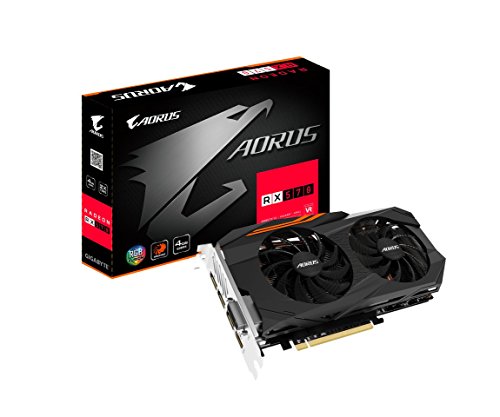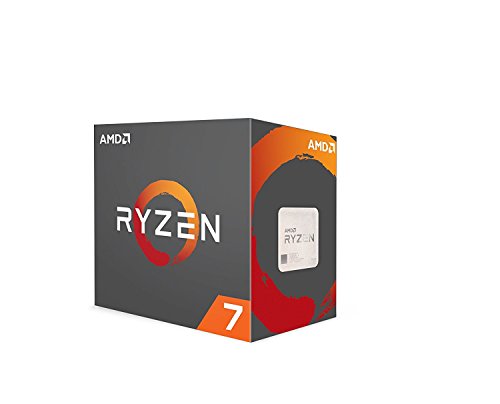AMD's Radeon RX 500-series graphics cards are a faster, better Polaris for new PCs

 Image: Brad Chacos
Image: Brad ChacosSurprise! AMD revealed a fresh lineup of graphics cards on Tuesday, and the Radeon RX 500-series is a perfect complement to the company’s new Ryzen 5 processors. What they aren’t, however, are AMD’s hotly anticipated Vega GPUs.
Instead, the Radeon RX 500 series are based on the same Polaris graphics processors as the Radeon RX 400 series launched last year, with the exception of a new low-end GPU focused solely on e-sports and home theater PCs. “Polaris refined and evolved,” as AMD calls it.
Yep, they’re tweaked refreshes, with one notable exception.
Mentioned in this article
Radeon RX 580 Nitro+
 Read our reviewPrice When Reviewed:$229.99Best Prices Today:$229.99 at Newegg
Read our reviewPrice When Reviewed:$229.99Best Prices Today:$229.99 at Newegg
While the term “refresh” typically sends shudders of apathy down enthusiasts’ spines, the improvements AMD made moving from the RX 400 series to the RX 500 series are still notable—mostly because they combat issues present in the original cards. The original Radeon RX 480, as great as it was, didn’t offer much overclocking headroom above its 1,266MHz maximum boost speed. (Even factory-overclocked custom cards tapped out at a mere 40MHz to 50MHz boost.) A power-draw controversy struck the card at launch as well, though to its credit, AMD pushed out a rapid fix for the issue.
 AMD
AMDThe Radeon RX 500 series is built using AMD’s third-generation 14nm process, which lets the graphics cards achieve higher clock speeds than their predecessors. The Radeon RX 580, for example, packs a 1,257MHz base clock—which is roughly the same as the RX 480’s maximum clock—and a 1,340MHz boost clock.
Mentioned in this article
Aorus Radeon RX 570
 Read our reviewPrice When Reviewed:$159.99Best Prices Today:$159.99 at Newegg
Read our reviewPrice When Reviewed:$159.99Best Prices Today:$159.99 at Newegg
AMD has also added a new power state, which allows the Radeon RX 500-series cards to consume less power at idle, while watching video, and while using multi-monitor setups. (Overall memory frequencies and bandwidth weren’t increased, however.) Radeon representatives also stressed the significant power and temperature gains achievable in games that support the awesome Radeon Chill, which debuted with Radeon Crimson ReLive in December. AMD’s working hard to whitelist games for Chill, and as part of the Radeon RX 500-series announcement, it revealed that the insanely popular League of Legends and Dota 2 are now compatible with the feature.
 AMD
AMDMeet the Radeon RX 500-series graphics cards
But enough blather! Here’s the new Radeon lineup, from top to bottom. Any details not mentioned remain the same from the RX 400-series.
The Radeon RX 580 rocks a 1,256MHz base and 1,340MHz boost clock, as mentioned. Cranking those clocks brings the rated TDP up from 150W to 185W.The Radeon RX 570 has a 1,168MHz base and 1,244MHz boost clock. While that’s a mild increase from the Radeon RX 470’s 1,206MHz maximum clock, it’s a significant jump in base clocks, which was a mere 926MHz before. Again, that extra oomph isn’t free, as the TDP increases from 120W to 150W.The Radeon RX 560 provides a decent bump over the RX 460’s 1,090MHz base/1,200MHz boost speeds, cranking things to 1,175MHz/1,275MHz, respectively. More notably, this is the full-fledged version of the Polaris 11 GPU. Whereas the RX 460 only packed 14 compute units (potentially to keep it under 75W, which is necessary for cards that don’t require extra power pins), the RX 560 rocks the full 16. That combined with the clock-speed boosts means the RX 560 could offer decently more performance than the RX 460—albeit at a higher power draw that will likely demand a 6-pin connector. Alas, AMD declined to share more details about this card.The Radeon RX 550 is a completely new model designed to appeal to e-sports gamers and home theater PC aficionados looking for more than what integrated graphics alone can provide. It’s essentially half of an RX 560 (or a third of an RX 570) with a mere eight compute units clocked at a 1,183MHz boost speed. AMD didn’t reveal a base speed. It’s got 2GB of memory over a 128-bit bus, though a limited number of models will offer 4GB capacity. It won’t need a supplemental power connector, drawing all needed power through your motherboard.
 AMD
AMDMentioned in this article
Radeon RX 550
Read our reviewPrice When Reviewed:$79.99Best Prices Today:$79.99 at Newegg
The Radeon 550 highlights another reason for the existence of the Radeon RX 500 series. AMD’s marketing materials don’t compare the graphics cards against the RX 400 series, because frankly, that’s not an upgrade worth spending your money on. Instead, AMD emphasizes how the RX 500 cards add a solid performance boost and worthwhile ecosystem features—like support for FreeSync and modern, 4K-capable media codecs—over the Radeon 300-series cards, and even older models. (For what it’s worth, that was the same major hook the RX 460 offered.)
Despite the appearance of the cards shown in some of the images above, there won’t be any reference RX 500-series boards available. Instead, AMD’s hardware partners (like Sapphire, XFX, Asus, et cetera) will be offering custom designs from day one—which makes sense, as this is a refresh of an existing graphics architecture.
 AMD
AMDAs far as pricing and release date info goes, the Radeon RX 570 and 580 go on sale today. The 4GB Radeon RX 570 carries a suggested e-tail price of $170, just like the RX 470; the Radeon RX 580, meanwhile, starts at $200 for a 4GB version and $230 for 8GB models. The $80 Radeon RX 550 will follow shortly after, on April 20; while the $100 RX 560 will hit the streets in May.
Attack of the clones
Let’s be honest: No gamer likes to see rebrands and minor iterations, especially when the world’s been waiting for Vega for what seems like an eternity. But the Radeon RX 470 and 480 already delivered compelling value compared to Nvidia’s (wildly different) 6GB GeForce GTX 1060 and 3GB GTX 1060, and that continued as drivers matured and supplies stopped being as limited as they were at the Polaris launch.
Mentioned in this article
AMD Ryzen 7 1800X processor
 Price When Reviewed:$499.00Best Prices Today:$235 at Amazon
Price When Reviewed:$499.00Best Prices Today:$235 at Amazon
Lots of people are upgrading their PCs right now thanks to new competition on the CPU front. This Radeon release gives buyers the advantage of a refined manufacturing process, gives reviewers a reason to revisit mainstream Radeon cards, and lets AMD sell shiny “new” graphics cards to go with those shiny new Ryzen processors. It’s not exciting whatsoever, but it’s practical from a business standpoint, especially since we probably won’t see new graphics card architectures from AMD or Nvidia any time in the immediate future.
So yeah, this is basically a repeat of the Radeon 300-series situation, but with memory speeds untouched.
Head over to PCWorld’s reviews of the Gigabyte Aorus RX 570 and the Sapphire RX 580 Nitro+ to see just where these new cards fall in the pecking order, and if you’re waiting for Vega, well, just keep waiting. AMD still says those enthusiast-focused graphics cards are due to launch sometime before the end of June. In the meantime, check out PCWorld’s in-depth interview with Radeon head Raja Koduri from CES on all things Vega, FreeSync 2, 4K gaming, and more in the video below.






